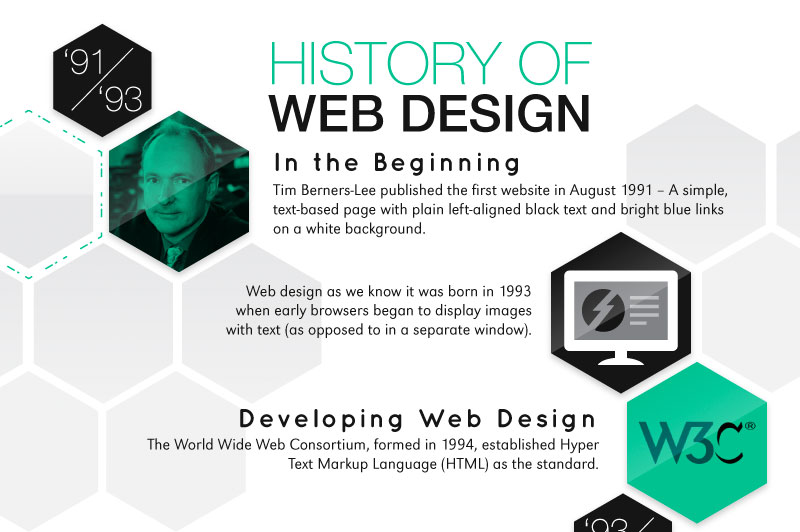The Advancement Of Web Site Style: From Past To Present
The Advancement Of Web Site Style: From Past To Present
Blog Article
Content Author-Hartley Dalby
In the past, internet sites were easy and focused on info. Navigating was direct, and layout was for desktop computers. Now, individual experience is crucial. Information guides designs for very easy navigation. https://www.forbes.com/sites/forbestechcouncil/2021/04/05/how-to-build-a-digital-marketing-strategy-for-businesses-targeting-growth-in-2021/ fit various gadgets. Today, dark setting reduces strain, and minimal menus boost navigating. https://www.adweek.com/creativity/how-nct-127-turns-original-content-into-a-winning-digital-marketing-strategy/ involve individuals, and vibrant visuals stick out. AI integration enhances involvement. See how layout has actually evolved to improve your on-line trip.
Very Early Days of Website Design
In the very early days of web design, simpleness reigned supreme. Internet sites were basic, with restricted colors, font styles, and layouts. The focus was on supplying info as opposed to showy visuals. Individuals accessed the web through sluggish dial-up connections, so rate and performance were vital.
Navigation menus were straightforward, usually located on top or side of the page. Internet sites were created for desktop computers, as mobile surfing wasn't yet widespread. Web content was king, and developers focused on easy readability over complicated style elements.
HTML was the key coding language made use of, and designers had to function within its restraints. Computer animations and interactive features were minimal contrasted to today's standards. Websites were static, with little vibrant content or customized user experiences.
Surge of User-Focused Style
With the development of web site style, a shift towards user-focused design concepts has actually come to be progressively prominent. Today, developing internet sites that focus on individual experience is vital for engaging visitors and accomplishing service objectives. User-focused design includes understanding the needs, choices, and habits of your target market to customize the internet site's layout, material, and includes accordingly.
Designers now perform extensive research, such as individual surveys and usability testing, to collect understandings and responses straight from users. This data-driven technique helps in creating intuitive navigating, clear calls-to-action, and aesthetically appealing user interfaces that reverberate with site visitors. By putting the user at the facility of the layout process, web sites can supply a much more individualized and pleasurable experience.
Responsive design has actually likewise become a key element of user-focused style, making certain that internet sites are optimized for different devices and screen dimensions. This adaptability improves ease of access and functionality, accommodating the diverse methods individuals engage with sites today. Essentially, the increase of user-focused style signifies a shift in the direction of producing electronic experiences that focus on the demands and assumptions of the end user.
Modern Trends in Website Design
Explore the most up to date patterns forming website design today. One famous fad is dark mode layout, providing a sleek and modern look while minimizing eye stress in low-light settings. An additional vital pattern is minimalist navigation, streamlining menus and enhancing individual experience by focusing on essential elements. Incorporating micro-interactions, such as animated buttons or scrolling results, can produce a much more interesting and interactive website. Receptive design stays critical, ensuring seamless user experiences throughout different gadgets. In addition, making use of strong typography and asymmetrical formats can include aesthetic interest and draw attention to specific web content.
Integrating AI innovation, like chatbots for consumer assistance or tailored suggestions, boosts customer engagement and improves procedures. Accessibility has additionally come to be a considerable pattern, with designers prioritizing comprehensive layout techniques to satisfy varied customer demands. Embracing sustainability by maximizing website performance for speed and efficiency is an additional arising pattern in website design. Teaming up with individual responses and information analytics to repeat and improve design continuously is important for staying relevant in the ever-evolving electronic landscape. By embracing these modern-day patterns, you can develop an aesthetically appealing, straightforward internet site that reverberates with your target market.
Final thought
As you reflect on the advancement of web site design from the very early days to now, you can see how user-focused style has actually ended up being the driving pressure behind contemporary fads.
Embrace the trip of modification and adaptation in website design, always keeping the customer experience at the center.
Remain current with the latest patterns and modern technologies, and never quit progressing your technique to produce aesthetically stunning and easy to use internet sites.
Develop, adjust, and produce - the future of web design is in your hands.
